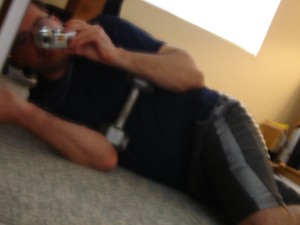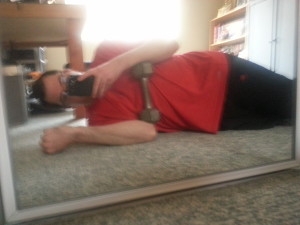Due to the significant response to my earlier post on CNP, I wanna go over all the significant studies on CNP so far. CNP and IGF-2 seem to be the two supplement targets with the greatest potential with IGF-2 having the most potential to those without open growth plates.
BMN111 is a potential CNP analogue undergoing testing.
The bone length overgrowth effects are likely mostly due to the inhibition of FGFR3 and ERK1/2. However, those tend to be anabolic in other tissues so CNP will most likely make you taller and lankier.
Meclizine is a supplement that is similar to some effects of CNP, inhibition of ERK1/2 but is available for sale. This post has some other information about meclizine as well as why FGFR3 inhibition is effective for height growth.
Meclizine Chewable Tablets – 25mg – Model 85207 – (3 Bottles of 100)
Note: Disobey any directions on the bottle at your own risk. I don’t know the optimal dosage. Also, this should only be offective on open plates.
Inflammation in children reduced CNP production so inhibiting inflammation should increase CNP levels.
As for possible ways CNP could increase height in those with closed growth plates:
Increased bone turnover and possible accelerated fracture healing in a murine model with an increased circulating C-type natriuretic peptide.
” we investigated the bone phenotype of a mouse model with elevated plasma CNP concentrations (SAP-CNP-Tg mice) in the present study. Micro-CT analysis revealed less bone in femurs, but not in lumber vertebrae, of young adult SAP-CNP-Tg mice than that of wild-type mice{CNP could weaken bone allowing for neo-growth plate formation}. Bone histomorphometry of the tibiae from 8-week-old SAP-CNP-Tg mice showed enhanced osteoblastic and osteoclastic activities, in accordance with elevated serum levels of osteocalcin and TRAP5b, respectively. Next we performed an open and stabilized femoral fracture using 8-week-old SAP-CNP-Tg mice and compared the healing process with age-matched wild-type mice. Immunohistochemical study revealed that CNP and its receptors, natriuretic peptide receptor-B (NPR-B) and natriuretic peptide clearance receptor are expressed in hard calluses of wild-type mice, suggesting possible role of CNP/NPR-B signaling in fracture repair, especially in bone remodeling stage. On micro-CT analysis, rapid decrease in callus volume was observed in SAP-CNP-Tg mice, followed by generation of significantly higher new bone volume with a tendency of increased bone strength. In addition, micro-CT analysis also showed that bone remodeling was accelerated in SAP-CNP-Tg mice, which was also evident from increased serum osteocalcin and TRAP5b levels in SAP-CNP-Tg mice at remodeling stage of fracture repair. These results indicate that CNP activates bone turnover and remodeling in vivo and possibly accelerates fracture healing in our mouse model.”
CNP overexpression also decreased bone stiffness.
 Here’s an image from about 2012. I tried to recreate something like this picture as best as I could.
Here’s an image from about 2012. I tried to recreate something like this picture as best as I could. This was from today. The dumbell acts as sort of a constant.
This was from today. The dumbell acts as sort of a constant.